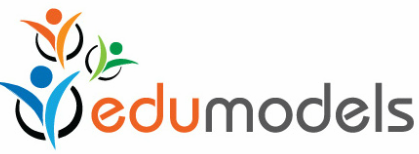|
Recently I came across the work of Zoe Weil, author, educator, and Co-Founder of the Institute for Humane Education. For nearly 30 years, Weil has been a Humane Educator (integrating human rights, environmental preservation, and animal protection in her teaching). She defines Solutionary quite simply, as someone who combines their talents and skills to solve a problem they care about. Here are three reflective questions she poses to young people (which I think are great for reflecting in high school, college/uni, and beyond!):
This reminds me of a quote by Oprah (I can’t help it, Oprah can be so quotable!!), who in an interview at Stanford (watch it here), gave the advice to “Find the place where your personality meets your purpose. Then, nobody can stop you.” Beyond the personal reflection, Weil also presents tools to facilitate students’ learning with this approach. One very cool activity I participated in at a recent conference was called “True Price”, which combines student’s familiarity with everyday objects (bottled water, a cheeseburger, t-shirt) with researching complex issues. We need a bigger vision for the purpose of schooling. And I believe that it should be this: that we provide every student, with the knowledge, the tools, the motivation to be conscientious choice-makers and engaged change-makers for a restored and healthy and humane world for all. I believe we need to graduate a generation of solutionaries. - Zoe Weil In one of her TEDx Talks (worth watching
here), Weil uses a red t-shirt to model this activity, which I’ll summarize. It starts with asking: what are the effects, positive and negative, of that t-shirt on ourselves, on other people, on on other species, and on the environment? In other words what is the true price of that t-shirt? Let’s start with the positives (they are a shorter list!) - You have clothing that you can buy cheaply, clothing production creates jobs, you may feel good about yourself in clothing that you like. Now for the negatives: Students start by reading the label of the t-shirt, seeing what it is made of (cotton), and where it was made (China). Students would then dig deeper to learn about cotton production, garment factories and transportation to the end user. But True Price involves more than understanding a basic supply chain. As students dig into these areas, Weil explains that they would start to learn about the toxic pesticides used in cotton production, which leads to more questions. How do we know the pesticides are toxic? Because they were (cruelly) tested on animals. Those pesticides also pollute soil and waterways - broader impacts! As students look into where cotton is produced, they may find out that 1/3 of the world’s cotton is produced in Uzbekistan, where an estimated 1 million kids work as slaves in cotton production. This continues with the dyes, garment factories, and transport to end consumers. I think you get the point. Now even writing this is making me feel a little overwhelmed. Is this too much for young people? Is it fair to put this burden on them?? Weil mentions these are common questions people ask, and she explains that students actually enjoy learning about these issues, and that really it is unfair NOT to introduce them to these realities early on. Furthermore, core subject areas (including math, science, language) come into play in all of these issues. Weil doesn’t stop there. She then moves into Solutionary mode, asking the following questions: What alternatives would do more good and less harm than this conventional product? What are the systems that need to be transformed to make those products pervasive? Now these are big questions, for sure. But maybe big questions are what we should be asking, as Sugata Mitra suggests, and then we as parents, educators, facilitators, can help students break down those questions into smaller ones. I like Weil’s vision and her work, because she encourages critical thinking, exploration and reflection, not to mention the emphasis on the social, environmental and human realms. But what I am most impressed with is her unique emphasis on facilitating students’ understanding of whole systems, so that their understanding of individual players and elements has more depth - in other words encouraging deeper learning. I think this is critical for the future of learning and the need for collaborative problem solving in future careers. As you can see, I’m a big fan! That said, I would feel most comfortable with this approach at the high school and college/university levels, and a bit more cautious of how this is introduced at younger ages. Weil and her team are currently working on developing curriculum for a new “Solutionary School” in New York city (starting with a high school), which she hopes will become a model school for the States and elsewhere.
0 Comments
Leave a Reply. |
Categories
All
AuthorA passionate educator.. on a quest for a schooling model to love! Archives
August 2017
|



 RSS Feed
RSS Feed
